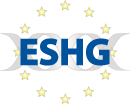The ESHG is proud to announce this year’s winners:
– Young Investigator Awards for Outstanding Science:
Karolis Šablauskas, NL; Diewertje Houtman, NL; Zhongbo Chen, UK; Cesar Prada-Medina, DE; Aude Beyens, BE.
– Isabelle Oberlé Award for Research on Genetics of Intellectual Disability: Eva D’haene, BE
– Lodewijk Sandkuijl Award for the best talk in Statistical Genetics: Liza Darrous, CH
– Vienna Medical Academy Award for the best talk in Translational Medicine: Huiwen Che, BE
– Mia Neri Award for the best talk in Cancer Research: Marie Coutelier, CA
– ELPAG Award for the best talk in the ELPAG track: Rowan Forbes Shepherd, AU
Congratulations!
The ESHG awards prizes of EUR 500.- (together with a free participation at the next meeting) for outstanding research by early career scientists presented as a spoken contribution at the conference, namely:
– Young Investigator Awards for Outstanding Science
– Isabelle Oberlé Award for Research on Genetics of Intellectual Disability
– Lodewijk Sandkuijl Award for the best talk in Statistical Genetics
– Vienna Medical Academy Award for the best talk in Translational Medicine
– Mia Neri Award for the best talk in Cancer Research
– ELPAG Award for the best talk in the ELPAG track
All early career scientists who have applied during the abstract submission are nominees for the awards. Each nominee must be first author (i.e. presenting author) of the abstract submitted for spoken presentation and should not be more than four years post-doctoral and not a Principal Investigator (P.I.).
We have asked the candidates to answer the following questions:
- Q1: Date and city of birth
- Q2: What is your current position?
- Q3: Why did you choose a career in genetics?
- Q4: What is so interesting about the research you are presenting at ESHG 2021?
These authors will present on Saturday, August 28, 2021
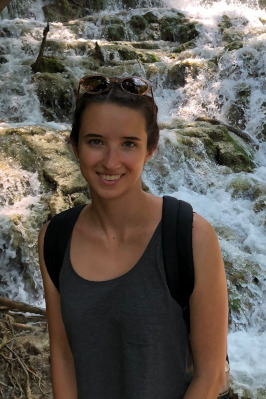
December 13th 1996 in Lille, France
Q2:
I am a second year PhD student in the groups of Prof. Alexandre Reymond and Prof. Zoltán Kutalik at the University of Lausanne. Currently, my research investigates the role of copy number variants (CNVs) in shaping complex human traits and common diseases.
Q3:
I have always been intrigued by the complexity and diversity of life. When it came to deciding in which field I wanted to pursue my studies, I realized that the common denominator among all questions that had fascinated me so far was to understand how genetic variation was able to propagate through several intermediate phenotypes in order to create the tremendous intra- and inter-specific variation observed in our world. The wide availability of both genomic and phenotypic data, as well as the clinical potential of discoveries made in humans, drove me to start a PhD in human statistical genetics.
Q4:
Before starting my PhD, I never gave much thought to copy number variants (CNVs). More difficult to assess than single nucleotide variants, CNVs tend to be neglected and only considered in the context of rare genomic syndromes. With progress in genomic technologies, it now becomes possible to assess CNVs in large cohorts. Our work shows that CNVs play an important role in shaping complex traits in healthy populations and that their study can reveal new gene functionalities.
Chiara will speak about “The impact of copy number variants on complex human traits” in the session C03 Bioinformatics, machine learning and statistical methods.
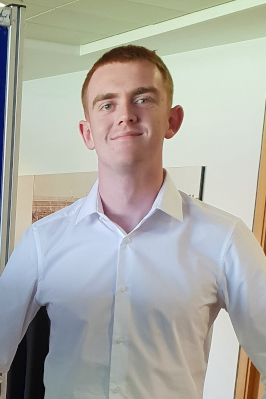
23/09/1994 Dublin
Q2:
PhD candidate
Q3:
As a teenager, I had an interest in biology, so I decided to study human genetics when I went to university at Trinity College Dublin.
For my final year undergraduate project, I was given the opportunity to work on a fascinating project using ancient DNA samples from prehistoric Ireland, which cemented my love of genetic research.
My PhD research is focused on the genetics of epilepsy. I hope that some of this work will one day be incorporated into the neurology clinic and positively impact the lives of people living with epilepsy.
Q4:
For a long time people with epilepsy, and their family members, have been known to have an increased risk for a variety of psychiatric disorders. Despite this strong epidemiological link, it’s been difficult to find genetic links tying epilepsy to its psychiatric comorbidities. We used a method known as ‘polygenic risk scoring’ on a genetic dataset of over half a million people to show for the first time that people with epilepsy tend to have an increased burden of genetic variants associated with schizophrenia, depression, and ADHD. We also found that people with difficult-to-treat seizures have a higher genetic burden for these psychiatric conditions than people who respond well to their anti-seizure medications.
Ciaran will speak about “Polygenic risk score analysis reveals shared genetic burden between epilepsy and psychiatric comorbidities” in the session C04 Unraveling the complexity of neuropsychiatric genetics.
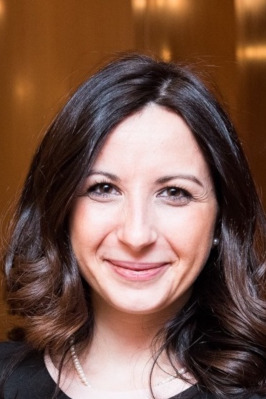
30/01/1986, Nocera Inferiore (Salerno), Italy.
Q2:
I’m postdoctoral Researcher at Federico II University, Naples, Italy.
Q3:
I’m pediatrician with a strong passion for human genetics. My ultimate goal is to cure and help my patients with genetic disorder, by leading research projects on patients’ based problems and delivering translational benefits of research back to the clinic. v
Q4:
Attending ESHG and presenting my research at the conference, I expect to broaden my scientific perspectives through interactions with peers and other investigators interested in the same topic. I am certain that such exposure will have an important impact on my research and will expand my understanding on this tremendously important field that bridges ethics, science, and medicine in my quest for personalized medicine.
Gerarda will speak about “Bi-allelic KARS1 pathogenic variants affecting functions of cytosolic and mitochondrial isoforms are associated with a progressive and multi-system disease.” in the session C07 BNovel insights in inherited metabolic diseases/b>.
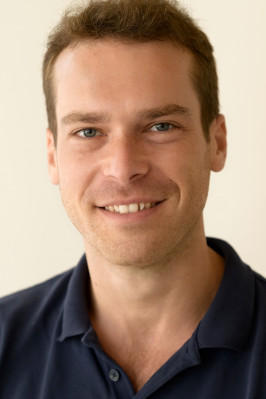
9.11.1988 – Minsk
Q2:
MD-PhD student
Q3:
I find human genetics in general, and the identification of novel disease causing genes in particular the most fascinating realm of biology. It is a field where each project takes you on a completely different journey through science, and your discoveries reveal new molecular mechanisms for common diseases, ultimately enabling us to find new and improved treatments for these diseases, helping people all over the world.
Q4:
I will be presenting a new genetically engineered CRISPR-Cas9 mouse model where we knocked-out a certain somewhat esoteric enzyme, and surprisingly shows a very interesting metabolic phenotype with possible implications on our understanding of some of the most fundamental processes in biochemistry.
Max will speak about “Ldhd-knockout mice recapitulate human metabolomic fingerprint of Gout, providing novel model organism for the disease
” in the session C07 Novel insights in inherited metabolic diseases.

09/08/1989 in Jendouba, Tunisia
Q2:
Research associate at Cambridge Institute for Medical Research, University of Cambridge
Q3:
Basically I am a neuroscientist. I choose to work in the intersection of neurosciences and genetics because it helps better understand the pathophysiology of many nervous system disorders and develop more effecient therapies.
Q4:
Holoprosencephaly is a spectrum of developmental disorder of the embryonic forebrain in which there is failed or incomplete separation of both cerebral hemispheres. To date, dominant mutations in sonic hedgehog pathway genes are the predominant Mendelian causes. I will be presenting new mutations in phospholipase C eta-1 that lead to holoprosencephaly. This could help in early diagnosis of holoprosencephaly during pregnancy.
Ichrak will speak about “Phospholipase C eta-1 (PLCH1) : A new gene that causes Holoprosencephaly” in the session C01 Developmental disorders & syndromes I.
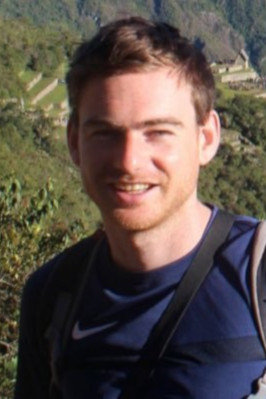
16/08/1990, Chester
Q2:
Research Fellow, University of Manchester
Q3:
My interest in human genetics was first sparked after learning that genetic analyses could guide diagnoses and treatment. Seeing genomics in this real-life context eventually led to PhD studies in Genomics at the Centre for Genomic Medicine in Manchester, UK.
Q4:
We integrated patient movement and staff location data into the analysis of viral genome data to understand the dynamics of SARS-CoV-2 transmission within healthcare settings. We show that these approaches increase the identification of outbreak clusters and that this dynamic approach can support infection control management strategies within the healthcare setting.
Jamie will speak about “Genomic sequencing and healthcare dynamics to track nosocomial SARS-CoV-2 transmission” in the session C06 COVID-19 Genomics.
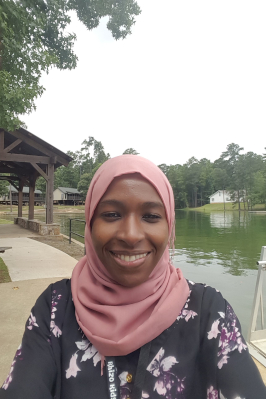
I am a postdoctoral trainee with expertise in translational research in rare genetic diseases. My project focused on exploring phenotype and therapy of a rare genetic disease called Rhizomelic Chondrodysplasia Punctata (RCDP).
Q3:
I chose genetics because I was fascinated with this rapidly growing field in which scientists are working together to integrate biology, biochemistry and biotechnology to solve scientific questions as well as to investigate for new techniques to diagnose and manage genetic disorders.
Q4:
I generated and characterized a series of Pex7 deficient mouse models that reflect the wide range of clinical severity observed in the rare human genetic disease, RCDP. The results of this project could be used as valuable clinical endpoints for future therapeutic interventions and to direct management for RCDP patients.
Wedad will speak about “A Pex7 deficient mouse series correlates biochemical and neurobehavioral markers to genotype severity – implications for the disease spectrum of rhizomelic chondrodysplasia punctata type1 (RCDP1)Novel insights in inherited metabolic diseases.

17/09/1985, Santiago, Chile
Q2:
Assistant Professor
Q3:
Because of the great research opportunities it has.
Q4:
Previous research on KDM6A-Kabuki syndrome only suggested some genotype-phenotype correlations and there were no strong data to suggest an association with sex. Our work it is the largest in its type and it could confirm several of those correlations and associations.
Victor will speak about “Clinical delineation, sex differences and genotype-phenotype correlation in pathogenic KDM6A variants causing X-linked Kabuki syndrome Type 2” in the session C01 Developmental disorders & syndromes I.
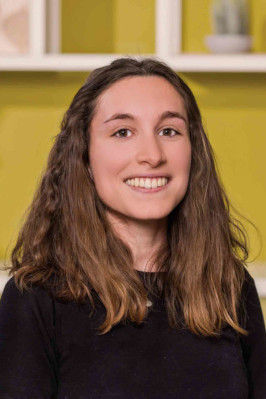
December 26th 1997, Madrid, Spain
Q2:
PhD candidate at Max Planck for Psycholinguistics (Nijmegen, The Netherlands).
Q3:
I chose a career in genetics because I find it fascinating to investigate what is in our genes, what we are. From this field I also like the multidisciplinary skills and the computational background that the field of common genetics usually requires.
Q4:
Half of the liability of Autism Spectrum Disorders (ASD) is attributable to common genetic variation. However, there is still little characterization of the genetic variance structures of ASD. In my research I aim to shed light into this matter by investigating symptom clusters in ASD (using the SPARK sample) and genetically predictable symptom heterogeneity.
Lucía will speak about “Genetic Clustering of Repetitive Symptoms, Oppositional Defiant Disorder and Language Disorder and Delay in People with Autism: A Multivariate Genetic Variance Analysis of Genetic Relationship Matrices in the SPARK Sample” in the session C04 Unraveling the complexity of neuropsychiatric genetics.
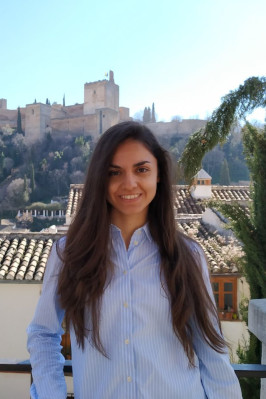
June 11, 1996, Murcia, Spain
Q2:
I am a PhD student at the Faculty of Computer Science, at the University of Murcia. My doctoral thesis project deals with the application of Machine learning to identify genetic and single-cell transcriptomic factors that contribute to neurodegeneration.
Q3:
My interest in the area of genetics lies in the wide variety of applications it provides, each of which opens up another wide range of possibilities thanks to the arise of new technologies and bioinformatics. At this moment, my interest in this area is focused on its applicability for an improved characterization of neurodegenerative diseases at the cell-type level.
Q4:
The interest of this research is based on the methodology applied to reduce the sparsity of single-cell RNA-sequecing data while maintaining their quality in downstream analysis: creating single-cell gene co-expression networks. In this way, we created an important framework for detecting cell-type specific molecular mechanisms in Parkinson’s disease.
Alicia will speak about “Unravelling the cell-type-specific molecular mechanisms linked to Parkinson’s Disease (PD) using bulk and single-cell gene co-expression networks (GCNs)” in the session C04 Unraveling the complexity of neuropsychiatric genetics.
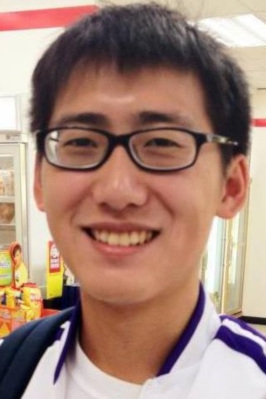
April 11, 1989, Miaoli City, Taiwan
Q2:
PhD student at Institute for Genome Statistics and Bioinformatics at University of Bonn
Q3:
With the gaining popularity of next-generation sequencing, the call for developing and applying computational models and novel algorithm to analyze genetic disorders has become urgent. Therefore, developing computational approaches to bioinformatics problems to save people who suffered from genetic diseases and thus increase the overall well-being is always the strongest motivation for my study.
Q4:
The currently available patient photos are unbalanced in ethnicity and age. Our study will first introduce how to use the joint learning and unlearning (JLU) technique proposed by Alvi et al. to remove age and ethnicity bias during the model training. Secondly, we will introduce the GestaltMatcher Database, which allows international scientists to upload the patient photos in their publications to have a patient dataset for the scientific community balanced in ethnicity and age.
Tzung-Chien will speak about “Removing confounders from facial representations trained on the biased patient images” in the session C03 Bioinformatics, machine learning and statistical methods.
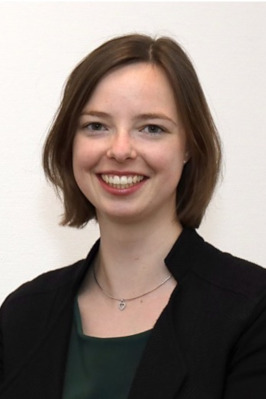
06/29/1988 Leer, Germany
Q2:
Postdoctoral research fellow
Q3:
I am fascinated by how the genetic code shapes the human brain and influences behavior in health and disease. The genetic architecture of psychiatric disorders is extremely complex and I wish to help explaining a part of this huge puzzle.
Q4:
Copy number variants (CNVs) are major risk factors in neuropsychiatric disorders, but specific CNV alleles have distinct psychiatric risk profiles. Additionally, we often observe a very variable phenotypic expressivity in CNV carriers, without knowing exactly why. This large-scale study investigates associations of pathogenic CNVs across five psychiatric disorders and characterizes the modifying role of common genetic variants in CNV carriers.
Marieke will speak about “Analysis of genomic copy number variation across psychiatric disorders” in the session C04 Unraveling the complexity of neuropsychiatric genetics.
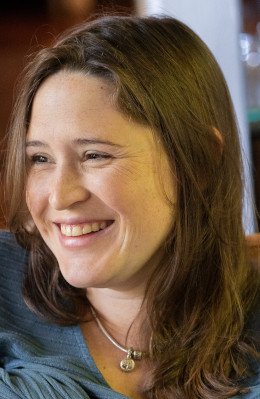
17/01/1991, Rotterdam.
Q2:
Currently I am a PhD-student at the department of Clinical Genetics in the Erasmus Medical Centre in Rotterdam. The research group I work with focusses mainly on the genetic background of abdominal aortic aneurysms.
Q3:
During my studies, both in psychology and medicine, I often kept wondering how and why diseases occurred. Genetics is a fundamental part of this. It not only helps find possible causes, but the study of genetics also helps us better understand the physiopathology of many diseases.
Q4:
On behave of my research group, I will present a new susceptibility gene for abdominal aneurysm, but possibly also other forms of aneurysms. Study of this gene will help further the understanding of aneurysmal disease.
Rosan will speak about “Whole-exome sequencing 677 aneurysm patients identifies multiple rare variants in the proprotein convertase FURIN causing impaired TGFB family signaling.” in the session C02 Cardiovascular disorders.
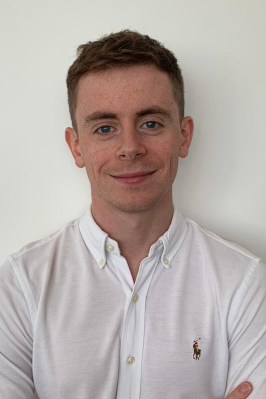
21/05/1989 Wexford, Republic of Ireland
Q2:
Clinical Research Fellow/ Specialist Registrar in Clinical Genetics
Q3:
I became interested in genetics while training in paediatric medicine where I saw many children with rare, but often undiagnosed conditions. Identifying the underlying cause of a condition is the first step towards understanding its’ pathophysiology and developing treatments. Clinical Genetics is a challenging but fascinating career that involves carefully identifying diagnostic clues in a patients clinical examination and history combining this information with molecular testing to deliver answers and counselling for families. I completed an MSc in Genomic Medicine at Imperial College London while in clinical training and am now undertaking a PhD in Primary Mitochondrial Disorders (PMDs) and working as a clinical research fellow at UCL. Given recent expansions in sequencing technologies, reproductive options and emerging therapies I think now is a very exciting time to be involved in human genetics.
Q4:
This research focuses on patients with suspected mitochondrial disease who underwent whole genome sequencing. While automised techniques for WGS data interpretation, such as semantic similarity tools, can help prioritise variants, subtitles in a presentation can be overlooked and diagnoses missed. Combining up-to-date bioinformatics with an in-depth manual review by a clinical doubled the diagnostic rate from this data and demonstrated a wide range of phenotypic mimics of PMDs that would not be identified through a fully automated pipeline.
William will speak about “Clinician led analysis of WGS data confers a diagnostic uplift in suspected primary mitochondrial diseaseC07 Novel insights in inherited metabolic diseases.
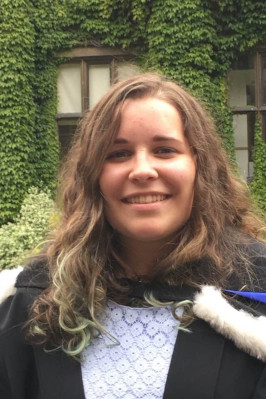
Date: 01/04/1996, City: Liverpool
Q2:
PhD student
Q3:
Genetics as a subject has fascinated me from a young age, the idea that by investigating our genomes we can determine the cause of a disease and find new potential treatments from this is something I have always wanted to be a part of.
Q4:
Our research provides the first evidence for the role of de novo mutations as a disease model in male infertility. Using this we have been able to highlight novel candidate genes potentially affecting the fertility of our patients. In a disorder where around 40% of all cases are sporadic, this is an exciting new avenue to explore!
Hannah will speak about “A de novo paradigm for male infertility” in the session C05 Reproduction is hot!.
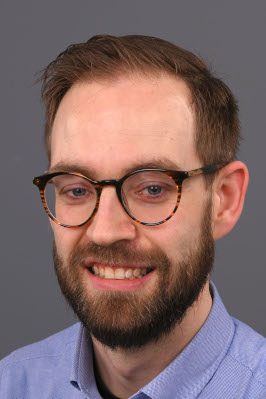
03-11-1988, Maasbracht (the Netherlands)
Q2:
Clinical geneticist in training + Post-doc in genetics of dilated cardiomyopathy
Q3:
Genetics is a field which combines all other medical specialties. The broad, but also the depth, of genetics is very appealing to me. Without realizing it, many patients (and other professionals) have questions related to genetics: it forms a field with great history, but also a bright future.
Q4:
It forms the core of a question which applies to a relative large patient population: the incomplete penetrance and variable expression of titin cardiomyopathy. Combining genotype, phenotype and the transcriptome together with bio-informatical, pre-clinical and clinical approaches, we try to find answers which are relevant for the patient.
Job will speak about “Clustering of the cardiac transcriptome of dilated cardiomyopathy patients reveals opposite molecular signatures among patients with truncating and missense TTN variants” in the session C02 Cardiovascular disorders.
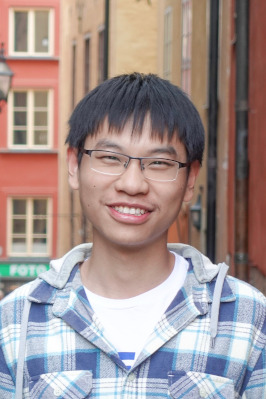
June 21, 1997 Foshan, Guangdong, China
Q2:
Doctoral student at Sun Yet-sen University
Q3:
I am curious about the phenotypic differences in population. What makes some people taller than others? Who are more likely to get sick? All human phenotypes, such as height and eye color, are affected by genes and the environment. It’s exciting to understand how genes affect phenotype. Especially in this era of big data, we have obtained a large amount of high-throughput data, such as GWAS summary statistics, RNA-seq data and proteomics data. These data provide opportunities to observe the whole picture of genetic processes. I am interested in developing and applying novel methods on such large data sets and providing valuable biological insights.
Q4:
I am going to talk about the genetic mechanism of human protein ACE2 which is known as the coronavirus receptor.
The interesting aspects of our work are:
1. We conducted a genome-wide association meta-analysis of plasma ACE2 levels in over 28,000 individuals from 14 cohorts. We discovered ten genome-wide significant loci for plasma ACE2, including eight novel trans-loci.
2. We performed mendelian randomisation analysis on ACE2 with COVID-19. The results suggested a potential causal effect of elevated ACE2 levels on severe COVID-9 through cis-pQTLs. We found that COVID-19 and its comorbidities are also genetically correlated with plasma ACE2 level.
3. We performed various and comprehensive downstream analysis including network enrichment analysis and epigenomics analysis, revealing a clear genetic landscape of protein ACE2.
Zhijian will speak about “Genetic landscape of the ACE2 coronavirus receptor
” in the session C06 COVID-19 Genomics.
These authors will present on Sunday, August 29, 2021
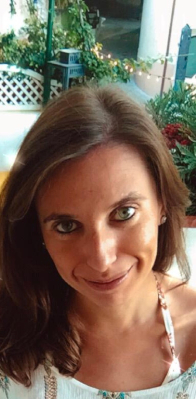
I was born in 1989 in Italy.
Q2:
I have defended my PhD at Ghent University (Belgium) last year, with a thesis entitled ‘CIL-EYE – Functional characterization of potential ciliary genes involved in syndromic inherited retinal diseases’ and I’m now still working on functional projects and inherited retinal diseases (IRDs) at the same university.
Q3:
My genetic journey began when, during my Master in Medical and Pharmaceutical Biotechnology (Modena and Reggio Emilia University, Italy), I decided to apply for an Erasmus Scholarship to prepare my thesis at the Department of Medical Genetics in Lausanne, Switzerland, under the supervision of Prof. C. Rivolta, a leading scientist in genomics of hereditary blindness. After graduation I moved to Belgium to start my PhD project, also on inherited blindness, in the Laboratory of Prof. E. De Baere at Ghent University.
Q4:
Long-read sequencing (LRS) is an emerging sequencing technique, particularly valuable for detecting structural variants (SVs), and we believe that systematic SV assessment in IRDs will close a diagnostic gap and will contribute to precision medicine. My presentation will highlight the role of SVs in different IRD families using a combination of NGS technologies, including LRS.
Giulia will speak about “A Long-read sequencing to unravel complex structural variants of CEP78 leading to Cone-Rod Dystrophyand Hearing Loss” in the session C09 Sensory disorders: multi-omics and long-read sequencing.
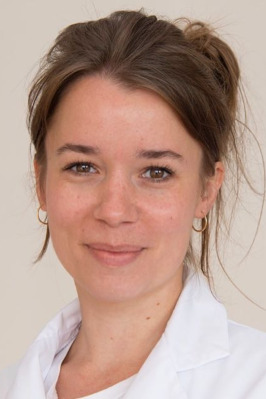
03-04-1992, Utrecht
Q2:
I’m a trainee in clinical genetics at the University Medical Center Utrecht and PhD student in genetic pediatric cancer predisposition at the Princess Máxima Center for Pediatric Oncology.
Q3:
I chose a position in genetics because of the unique combination of research and meaningful direct patient contact in a rapidly evolving field. The continuous driving force in my work is to help people understand and manage the medical, psychological and familial implications of their genetic test results.
Q4:
Professionals from ten different countries achieved consensus for a new surveillance protocol for DICER1 pathogenic variant carriers. The protocol comprises a minimum program as well as an extended version for consideration. The simplified minimum surveillance program is intended to optimize the balance between benefits versus risks and burden, and to be practical. The surveillance program for consideration promotes personalized surveillance and shared decision making. To enhance patients’ self-care skills we developed an information leaflet that informs patients about potential symptoms of DICER1-associated tumors.
Jette will speak about “Surveillance recommendations for DICER1 pathogenic variant carriers: a report from the SIOPE Host Genome Working Group and CanGene-CanVar Clinical Guideline Working Group” in the session C13 Cancer susceptibility: From mechanisms to clinic.
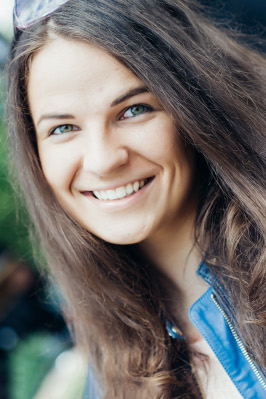
November 5 1993, Vilnius, Lithuania
Q2:
PhD student in the Clinical Genetics Group at the Department of Molecular Medicine and Surgery, Karolinska Institute, Stockholm, Sweden
Q3:
I have always been fascinated how the smallest changes in the DNA sequence can contribute to specific phenotypes or even lead to a severe disease, both in humans and animals. Solving genetic cases is a challenging puzzle where one needs to recognise specific patterns, connect the dots of different molecular pathways, and also sometimes think outside the box.
Q4:
In our study, we shed light on a previously unknown genetic cause of a very rare skeletal dysplasia Al-Gazali type. We describe a unique cohort with distinct clinical and radiographic features and we explore functional consequences of the disease-causing variants using primary cells from affected individuals. Furthermore, the study highlights the importance of international collaborative effort in this challenging diagnostic odyssey.
Dominyka will speak about “Al-Gazali skeletal dysplasia constitutes the lethal end of ADAMTSL2-related disorders” in the session C08 Skeletal and connective tissue disorders.
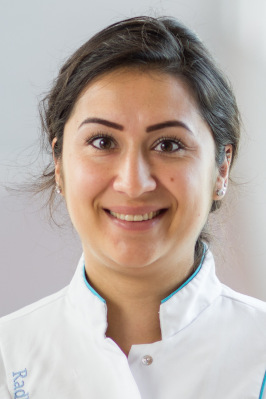
Date of birth: Oktober 10th, 1987. Place of birth: Nijmegen, the Netherlands.
Q2:
Resident clinical genetics
Q3:
I like the idea of helping patients to get answers to the ‘why?’ questions. During my counseling, I have enough time to really listen to my patient and to provide information while other healthcare providers might lack the time to do this. Furthermore, I think genetics is the future with regards to moving towards personalised medicine.
Q4:
We are taking big leaps in genetics with regards to the discovery of novel genes and even genetic modification. However, it is important to keep the quality of care in mind. Only after high quality counseling, patients will have the tool for high quality decision-making.
Our research shows that real-time video consultation was well received by patients and genetic counsellors. So even though we were forced to change our means of counselling because of the Covid-19 pandemic, we were still able to deliver good care.
Özlem will speak about “Genetic counselling by video consultation during COVID-19 pandemic: the perceived quality” in the session C12 Counselling, communication and service delivery.
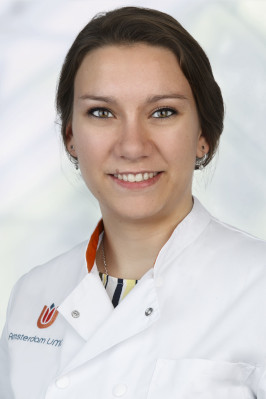
8th OCT 1995, Amsterdam
Q2:
Resident Clinical Genetics (not in training)
Q3:
My ambition is to become a clinical geneticist to help patients. This can be done by identifying a cause of consisting symptoms, which can help the patient to accept certain problems. Another goal is to provide preventive care for certain genetic conditions, in which we can help patient to stay healthy.
Q4:
In our research, we focus on a potential lethal condition, the vascular Ehlers Danlos syndrome. By improving knowledge about this condition and improving guidelines for follow-up and treatment of complications, we aim to improve the life expectancy and quality of life of these patients. The cohort that we will present has not been reported before, which may provide new insights.
Jessica will speak about “Vascular Ehlers-Danlos syndrome – A comprehensive natural history study in the Dutch patient cohort, preliminary results” in the session C08 Skeletal and connective tissue disorders.
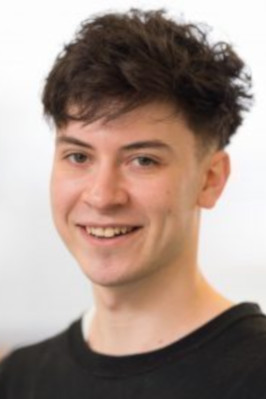
1 March 1995, Gateshead, UK
Q2:
Research Associate
Q3:
A career in genetics bridges the gap between human disease and cell biology. We can learn so much about basic science and offer incredibly important genetic diagnoses by using high throughput sequencing approaches to assess patients with rare disease.
Q4:
Autophagy is a conserved process driven by ‘ATG’ proteins and has been predicted to be essential for human survival. However, we have discovered a cohort of twelve patients harbouring ATG7 mutations. In some patients, this leads to the absence of the classical degradative autophagy pathway, yet these individuals are able to survive into adulthood with relatively mild neurological phenotypes.
Jack will speak about “Biallelic ATG7 variants impair autophagy leading to neurological disease” in the session What’s New? Highlight Session.
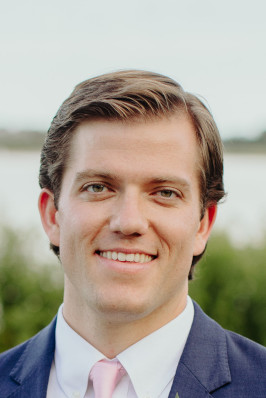
May 13, 1991 in La Jolla, California, USA
Q2:
Ph.D. Candidate in Bioinformatics and Integrative Genomics at Harvard Medical School
Q3:
I am principally excited to enter the field of human genetics for my career because of the directions the field is heading in this century. Human genetics and genomics are emerging as a relatively unique domain where the intersection of statistics and computer science can be built upon decades of careful, principled molecular studies and applied to massive emerging datasets larger than the largest in nearly any scientific discipline, all with the express goal of learning more about human physiology and disease. To me, the opportunities for discovery in human genetics over the coming decades appear nearly limitless.
Q4:
Massive sample sizes and international collaborations have already become foundational for understanding the role for common variants on anthropometric traits and common/complex diseases through traditional SNP GWAS. In our study, we show that similar approaches of data aggregation & harmonization are likely to prove insightful for classes of variants frequently excluded by traditional GWAS, such as rare copy-number variants, which can have large effect sizes and significant impacts on human health. We further demonstrate that these types of large-scale data aggregation efforts can be mined to extend existing knowledge (such as the roles of truncating point mutations in individual genes within large syndromic genomic disorder CNVs) and to produce new metrics that may be broadly applicable to prioritizing variants in medical genetics and clinical diagnostics.
Ryan will speak about “A cross-disorder dosage sensitivity map of the human genome” in the session PL2 What’s New? Highlight Session.
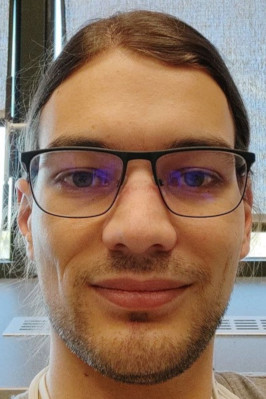
14/09/1992 Nantes
Q2:
4rth year PhD student
Q3:
interested since middle of my studies : how does DNA and information regulate life, are transmitted, are working ? Diagnostic and discovering pathomecanism in human disease and how to help patients ?
Q4:
We manage to set up a pipe line that’ll help any person with a VUS in the DYRK1A in the futur, managed to give final diagnostic answer to famillies waiting since years, we validated our approch at many levels all confirming our results (Clinical evaluation, in silico analysis, epigenetic signature and functionnal assays).face
Jérémie will speak about “Integrative approach to interpret DYRK1A variants, leading to a frequent neurodevlopmental disorder” in the session C14 Advances in neurogenetics: From diagnosis to treatment.
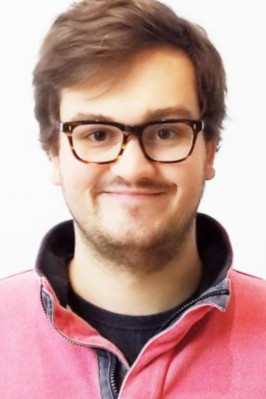
I was born on June 8th, 1995 in London, UK
Q2:
I am a PhD student at UCL Queen Square Institute of Neurology. I am based at the Francis Crick Institute under the supervision of Professor Sonia Gandhi.
Q3:
I am fascinated by the mechanisms underpinning neurodegenerative disease and the role of genetic factors in their pathogenesis. Genetic research provides critical information into disease pathways, driving translational research and the development of novel disease-modifying therapies for neurodegenerative disorders.
Q4:
We have developed a novel antisense oligonucleotide (ASO) targeted to the SNCA gene which reduces α-synuclein expression in midbrain dopaminergic neurons generated from Parkinson’s disease patient-derived induced pluripotent stem cells. This ASO-induced reduction of α-synuclein expression reverses established α-synuclein pathology, improves mitochondrial function, and rescues cell death in these neurons. Our work therefore supports the continued exploration of ASOs targeted to SNCA as a promising novel disease-modifying therapy for Parkinson’s disease.
James will speak about “Antisense oligonucleotides targeting SNCA reduce alpha-synuclein and associated cellular pathology in Parkinson’s patient iPSC-derived midbrain dopaminergic neurons” in the session C14 Advances in neurogenetics: From diagnosis to treatment.
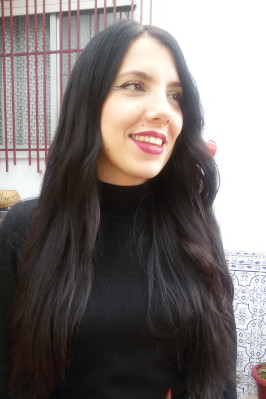
I was born on 18th March 1990 in Murcia, Spain
Q2:
I am a PhD student and a research assistant at the Ryten Laboratory, based at the UCL GOSH Institute of Child Health in London.
For further information about our group, please visit https://rytenlab.com/.
Q3:
I chose a career in genetics because I found a higher purpose in the outcomes that this occupation could provide to humanity than in dedicating my time to any other professional activity.
Q4:
One of the most interesting parts of my research is that my findings imply that the detection of pathogenic splicing events in patient-derived RNA-sequencing data could be improved by modelling RNA splicing noise.
Sonia will speak about “Splicing noise is detectable across human tissues and modelling its characteristics is likely to improve the detection of pathogenic splicing within patient-derived samples” in the session C11 New technologies and better diagnostics.
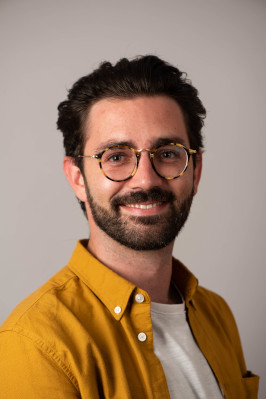
25/11/1991, Geneva, Switzerland
Q2:
2nd year PhD student in Olivier Delaneau’s group, Department of Computational Biology, University of Lausanne.
Q3:
When I was a kid, someone told me that humans are 99.9% genetically identical. No way.
Now, I get it. And I am very interested in the impact of genetic variations on any phenotype.
Q4:
The approach we propose allows inferring the parent-of-origin of alleles even when the parental’s genomes or family pedigrees are not available. It leverages relatedness among samples and can be applicable to most large scale GWAS datasets, providing great resources to discover parent-of-origin effects on many phenotypes. In the UK biobank, we multiplied by 5 the number of samples with parent-of-origin assignment compared to using known family information. This drastically boost discovery power and help to better characterize the genetic architecture of parent-of-origin effects.
Robin will speak about “Parent-of-origin inference for biobank scale datasets” in the session C10 Genome-wide Association Studies.
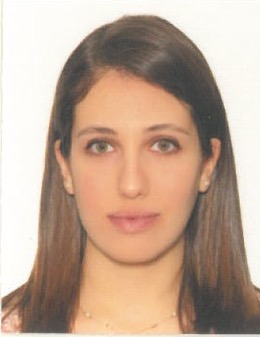
01/01/1993, Beirut, Lebanon
Q2:
PhD student
Q3:
While endlessly fascinating in itself, it is the application of genetics to human disease that spurred my decision to pursue a career in the field. It is an exciting and rapidly evolving, constantly revealing new ways in which human traits are modulated.
Q4:
My research identified a candidate gene that could predispose people to a common cancer in adolescents. This discovery sheds light on the role of genetics in cancer and might possibly lead to a better prevention, screening and effective targeted therapy for Hodgkin lymphoma.
Elsa will speak about “CCNF (Cyclin F) as a candidate gene for familial Hodgkin lymphoma” in the session C13 Cancer susceptibility: From mechanisms to clinic.
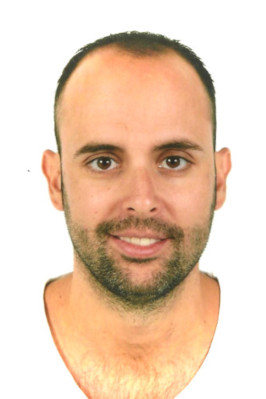
Girona, 25/03/1986
Q2:
Genetic counselor
Q3:
I first studied a degree in psychology and then a degree in biotechnology (specialized in human genetics). I found that genetic counseling was the perfect combination of both disciplines I learned.
Q4:
Cancer genetic testing is implemented worldwide and the way how people cope with the psychological impact of the results has been assessed. Beyond classical predictors, personality traits can determine the psychological impact (i.e distress or uncertainty) derived from genetic testing.
Adrià will speak about “Personality traits predict psychological impact derived from germline cancer genetic testing” in the session C12 Counselling, communication and service delivery.
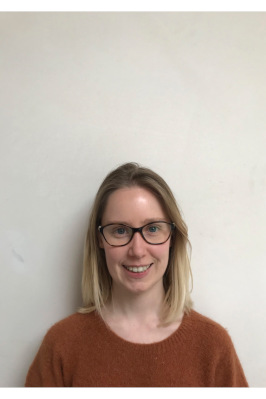
20 Aug 1991, Roeselare, Belgium
Q2:
Currently, I am finishing my PhD. I will defend my PhD on the 17th of May.
Q3:
I choose to pursue a PhD in the field of molecular genetics because I was intrigued how genetic defects induced elastic fiber fragmentation and subsequent pleiotropic clinical manifestations. I started my professional career at the Center for Medical Genetics in Ghent (CMGG) under the mentorship of Prof. Bert Callewaert and Dr. Patrick Sips. The CMGG at Ghent University has a strong reputation as an internationally recognised center of expertise for research, diagnostics and clinical management of rare disorders including cutis laxa syndrome.
My long-term career goal is to develop a research program focusing on how the molecular mechanisms can link the genetic defects to clinical presentation of affected individuals with cutis laxa syndrome. This question is still poorly understood, in part due to the lack of relevant disease models. I would also like to focus on the development of efficient therapeutics for the treatment of cutis laxa syndrome and other heritable soft connective tissue disorders.
Q4:
Elastogenesis, the development of functional elastic fibers in skin, blood vessels, lung, and other tissues, is a hierarchical process which involves a number of proteins with characteristic and distinct roles. Pathogenic variants in elastogenic genes such as fibrillin-1 (FBN1), fibulin-4 (FBLN4), fibulin-5 (FBLN5), and latent transforming growth factor β (TGFβ) binding proteins (LTBPs) causes Mendelian disorders characterised by impaired development of elastin-rich tissues with or without skeletal abnormalities. So far, the clinical manifestations and molecular mechanism of LTBP1 deficiency in humans have remained unknown and a mystery to the clinical geneticists and the elastic fiber field.
Our study is the first to report homozygous LOF LTBP1 variants in eight affected individuals from four unrelated consanguineous families. Affected individuals present with cutis laxa, craniofacial dysmorphism, mild variable heart defects and altered skeletal development including short stature, craniosynostosis, brachydactyly, clinodactyly, and syndactyly. Moreover, our study provides important novel insights related to extracellular matrix assembly in heath and disease. Our in vitro and in vivo data underscores the importance of the LTBP1 LLC in matrix assembly and bone homeostasis.
To conclude, we have a very exiting story to tell at the conference.
Lore will speak about “Bi-allelic loss-of-function variants in LTBP1cause autosomal recessive cutis laxa syndrome” in the session C08 Skeletal and connective tissue disorders.
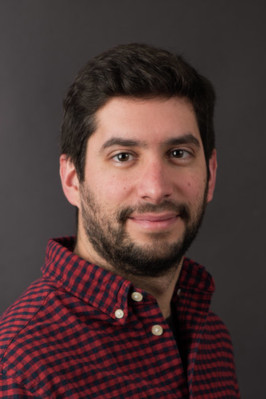
September 5, 1988 – Lisbon, Portugal
Q2:
Marie Sklodowska-Curie Postdoctoral Fellow at the University of Lausanne, Switzerland
Q3:
I’m fascinated by the intricacies of life at the molecular level, which motivated me to follow a career in genetics. Discoveries in genetics have the potential to be revolutionary and greatly impact our future, as well as understand our past. Yet, there is still much to discover and I personally wish to contribute to this field with new ideas and solutions.
Q4:
I will be presenting results of an innovative computational project which studies in-depth the mechanisms leading to the co-expression of nearby genes. How many nearby genes are co-expressed and why has long been debated. We provide clues to answer both questions using both bulk and single-cell RNA-seq. The understanding of how nearby genes are linked will ultimately improve the interpretation of gene-disease associations.
Diogo will speak about “Local gene co-expression measurements in single-cells highlight inter-individual specificity” in the session PL2 What’s New? Highlight Session.
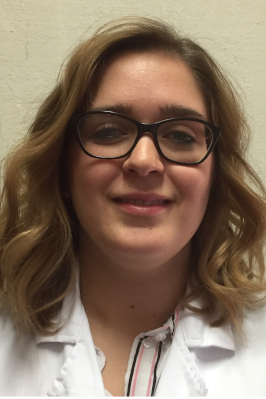
07-11-1992, Bologna (BO), Italy
Q2:
I’m a PhD student waiting for PhD final defense and I’m attending the first year of Medical Genetics Speciality School
Q3:
Since I was young, I knew I want to do something to help people, but I even knew I’m too empathic to become a medical doctor. So I scrolled all the possible jobs which allow me to be helpful and I got into genetics. I was and I’m still be so fascinated by how a very small modification can explain so complicated condition and I’m really more focusing on try to improve knowledge to offer a better patients’ lifestyle.
Q4:
The novelty of my research is that, ultil now, Joubert syndrome (JS) has been considered only as a recessive condition, inducing the analysis of NGS data in diagnostic unit based on this model of inheritance. The identification of null heterozygous variant in SUFU as causative of mild for of JS with pure neurological phenotype, highlighting the possibility to an unaware healthy parent to transmit the disease to the offspring. Awareness of this genetic condition will increase the diagnostic yield of mild JS, allowing appropriate genetic counselling and risk estimates.
Valentina will speak about “SUFU heterozygous loss of function variants cause a dominantly inherited neurodevelopmental disorder at the mildest end of Joubert Syndrome” in the session C14 Advances in neurogenetics: From diagnosis to treatment.

I was born in Foggia, Italy, the 21st of November 1990
Q2:
I’m a researcher at the Laboratory of Regulatory and Functional Genomics at the Institute Casa Sollievo della Sofferenza di San Giovanni Rotondo
Q3:
Because the study of how a small molecule like DNA “rules” our life is fascinating
Q4:
Our results confirm that DNA methylation episignature analysis is an effective diagnostic modality that can help to establish, improve, and correct a molecular diagnosis that is achieved by the standard DNA sequencing approaches.
Gabriella will speak about “DNA methylation episignature testing improves molecular diagnosis of mendelian chromatinopathies
” in the session C14 Advances in neurogenetics: From diagnosis to treatment.

PhD student at the department of Genetic Epidemiology at the University of Regensburg
Kira will speak about “Discovery and prioritization of variants and genes for kidney function in >1.2 million individuals” in the session C10 Genome-wide Association Studies.
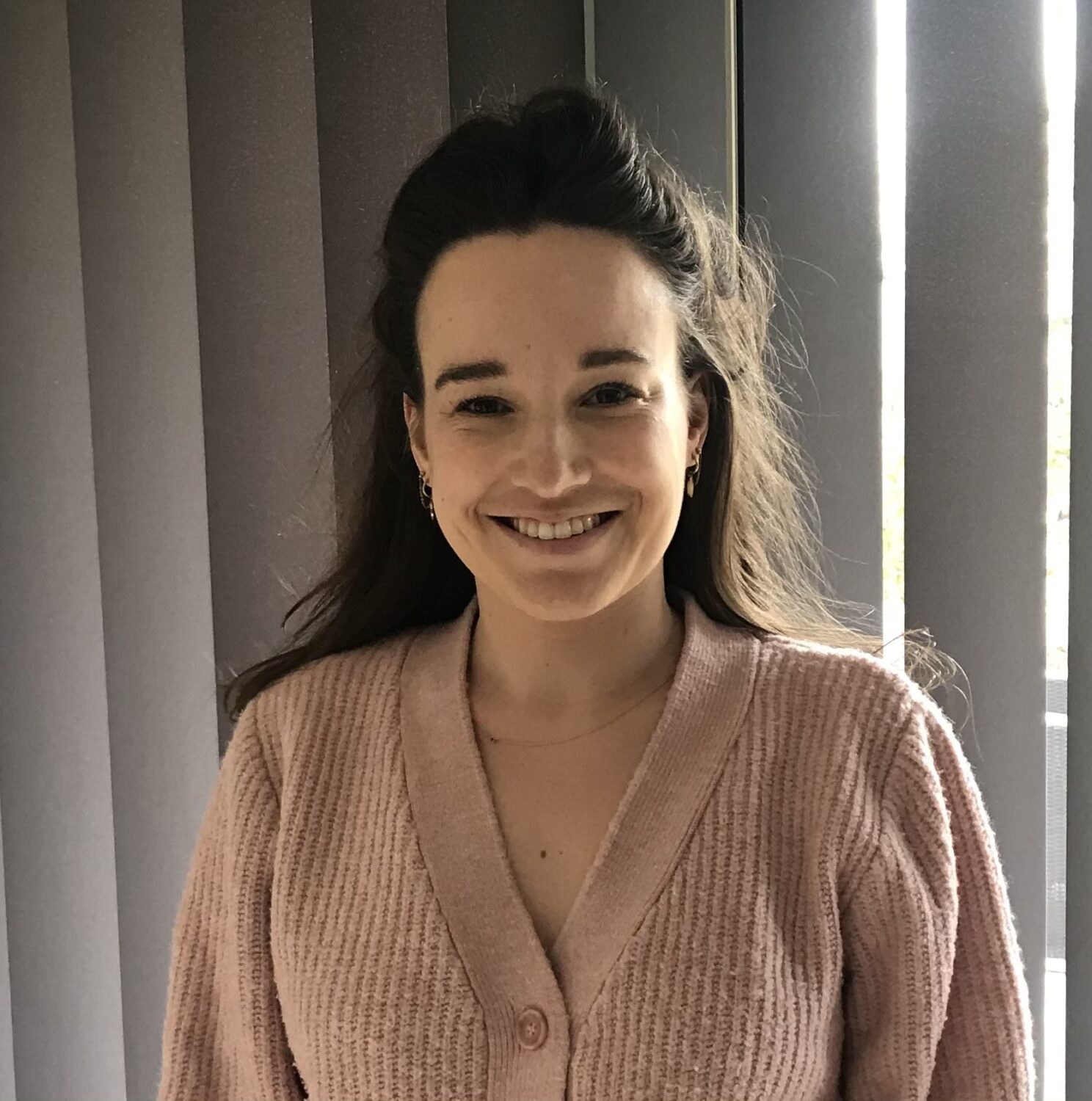
I was born on November 13th, 1995 in Zwijndrecht, the Netherlands.
Q2:
I am a PhD student at the departments of Clinical Genetics and Pathology at the Leiden University Medical Center, the Netherlands.
Q3:
My choice for a career in genetics was founded during a genetics course in the study Biomedical Sciences. I got amazed by how much is stored in our genome and how much can go wrong. My interest kept growing during two internships and I am very happy to continue as PhD student.
Q4:
The research I will present at the conference is very interesting since it contains a remarkable combination of genetics and environmental factors. It is an early step towards an additional explanation for the development of colorectal adenomas.
Diantha will speak about “APC mosaicism testing in milder polyposis phenotypes reveals pks+ E.coli bacteria as a possible additional explanation for the development of colorectal adenomas” in the session C13 Cancer susceptibility: From mechanisms to clinic.
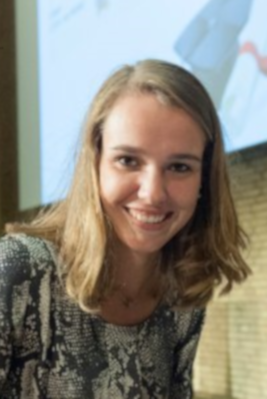
11-10-1993, Zuidhorn, the Netherlands
Q2:
PhD candidate
Q3:
I am a medical psychologist, and I think that from a psychosocial perspective clinical genetics is a very interesting field. Often healthy patients are confronted with a potential increased risk on developing a disease, or having a child with a certain disease, in which risk perception and handling uncertainty play an important role. Furthermore, the information is not only relevant for patients themselves, but also for their family members. This familial character can have a high impact on psychosocial and family functioning. In my bachelor and master’s, I did a research internship in clinical genetics, and after that, a PhD in genetics felt as a logical step.
Q4:
I will present the results of a randomised controlled trial that we conducted on informing family members at risk of inherited cardiac diseases in the Netherlands. In this trial, a so-called ‘tailored approach’ (i.e., probands are asked whether they prefer to inform relatives themselves and whether there are relatives they prefer to be informed by the genetic counsellor, with a family letter being directly sent to all family members after one month with consent of the proband) is compared to the currently used, proband-mediated approach. I think the results of this study are interesting as clinical geneticists/genetic counsellors are thinking about how to increase this uptake, especially for diseases where preventive and/or treatment options are available.
Lieke will speak about “A tailored approach towards informing relatives at risk of inherited cardiac diseases: results of a randomised controlled trial” in the session C12 Counselling, communication and service delivery.
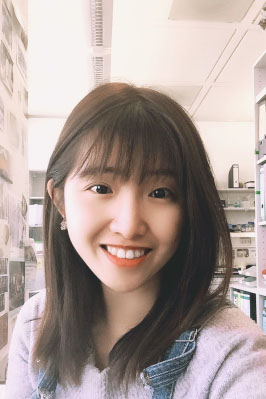
23.08.1990
Q2:
MD student
Q3:
In the past, I worked as a neurological doctor in one hospital of China. I noticed that many neurological disorder cannot find an exact etiology to explain. Most mechanism is associacted with genetic problems. That’s the reason why I choose to start learning genetics and do the research related to it.
Q4:
We found that mitochondrial dysfunction and oxidative stress may explain behavioral abnormalities in FOXP1 syndrome. It is the first time to report this mechanism in this disorder. In addition, targeting on the diets or antioxidant drugs could be a possibility to treat FOXP1 syndrome in the future.
Jing will speak about “Mitochondrial dysfunction and oxidative stress may explain cognitive and muscle impairment in FOXP1 syndrome
” in the session C14 Advances in neurogenetics: From diagnosis to treatment.
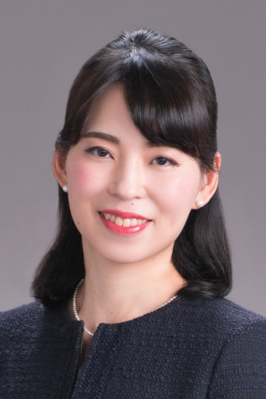
18.3.1987, Tokyo, JAPAN
Q2:
Instructor, Center for Medical Genetics, Keio University School of Medicine
Q3:
During my career as a pediatrician, I have provided care to several unforgettable patients with genetic disorders and their families who were living active lives despite their difficult health and social status. Hoping to alleviate their lives through better care, I decided to choose medical genetics as my specialty. Obviously, the field awaits fundamental progress in regard to both diagnosis and treatment. I wish to devote my future professional career to improving clinical practice in medical genetics, and to conducting basic and clinical research in human genetics as a means of tackling whatever issues need to be resolved to improve patient care.
Q4:
Chimeric genes themselves are a well-known pathogenesis of diseases in the field of cancer. However, it has not been fully demonstrated that chimeric genes can also be a mechanism for the development of congenital diseases in children. In this study, we established the role of chimeric gene formation in pediatric genetic diseases.
Mamiko will speak about “Chimeric transcript formation as a new pathogenetic mechanism of rare and undiagnosed diseases: Analysis using whole genome sequencing and long-read transcriptome sequencing.” in the session C11 New technologies and better diagnostics.
These authors will present on Monday, August 30, 2021
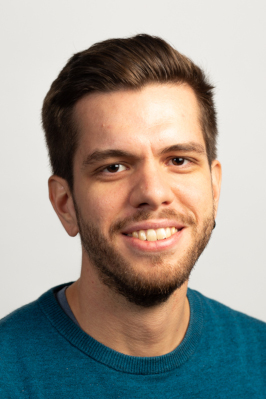
30.07.1993, Verona, Italy
Q2:
I am a doctoral student at FIMM, University of Helsinki
Q3:
I chose my current position because I was fascinated by the idea to work with large-scale genetic and health record data and integrate genetics, epidemiology and data science to build tools for the prevention of common diseases
Q4:
I think what is most interesting is the peculiarity of the registry data linked in Finngen, that includes information about the actual medication purchases, rather than prescriptions, and that allows to precisely estimate different drug taking behaviours
Mattia will speak about “Genetic and environmental determinants of drug adherence and drug purchasing behaviour.” in the session C17 Population genetics and genetic epidemiology.

19.11.1992, Altdorf, Switzerland
Q2:
PhD Candidate
Q3:
Advances in the field of genetics have paved the way for progress in biomedical sciences. Genetics advanced the understanding of evolution, of key processes in the human body, health, and disease development. A plethora of techniques has been developed over the past decades, allowing e.g. the unprecedented analyses of whole genomes, thereby fuelling the progress of (rare) disease diagnostics, the study of gene expression and translation, or the generation of transgenic animals as diseases models not only for governing a better understanding of the molecular aetiology of diseases and their symptoms but also for the investigation of potential medical therapeutic approaches. Thus, genetics to me is a field of research with unparalleled immediate impact for patients, often suffering in today’s healthcare system and going through extensive diagnostics odysseys.
Q4:
Aortic diseases such as aneurysms and dissections are a cause of high morbidity and mortality in the western world. So far, a variety of genetically caused syndromic and non-syndromic forms as well as their associated genes has been described, such as the vascular Ehlers-Danlos syndrome, caused by mutations in the COL3A1 gene. To date, studies using animal models for testing novel medical therapeutic approaches for aortic diseases have mostly been based on morbidity (e.g. aneurysm progression, dissection), mortality, or histological analyses to assess treatment efficacy. However, while these methods provide qualitative insights, they can not objectively reveal how the treatment influences the strength (i.e. biomechanical integrity) of the aortic wall, which ultimately determines whether or not a drug is effective to prevent aortic dissection and rupture. Thus, we developed a novel approach to measure the tensile force at rupture of uniaxially-stretched aortic rings as an objective read-out of the biomechanical integrity of the aortic wall. Notably, the read-out system provides individual-level biomechanical read-out of the aortic wall integrity compared to cohort-level results of clinical trials limited to clinically measurable outcomes due to age- and other risk-factors-related arterial events (cf. incomplete penetrance and/or expressivity of arterial events). Thus, our read-out system is of utmost essentiality for determining the added value (strengthening of the weakened aorta) of already-marked approved medical therapies by the means of drug repurposing. Thereby, well established drugs with long-term safety records that have an added value can rapidly be identified and are available directly at reasonable costs for the patients. Moreover, our system also allows the assessment of the aortic phenotype of different/novel mouse models, thereby testing e.g. the causality between candidate variants and aortic phenotype.
Maria will speak about “New uses for old drugs: Added value of celiprolol and pravastatin in vascular EDS” in the session C21 Clinical immunology and novel therapies of genetic diseases.
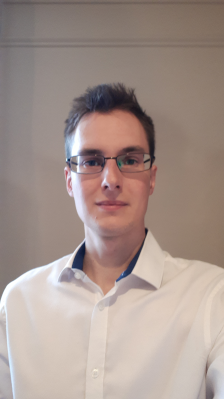
04/120/1990, London
Q2:
Postdoctoral Researcher
Q3:
I have always been interested in human stories, where we have come from and how that shapes us today. Research within population genetics allows me both to explore human variation as well as history, and study the footprints that past events have left behind in our DNA.
Q4:
The work I am presenting at ESHG this year has been a pleasure to work on because we have investigated the echoes of European demographic history though the patterns of haplotype sharing in a dataset of European individuals spanning the continent. The breadth (and depth) of this sample was quite surprising, a reveal a wide landscape of European genomic variation.
Edmund will speak about “Revealing the recent demographic history of Europe via haplotype sharing in the UK Biobank.” in the session C17 Population genetics and genetic epidemiology.
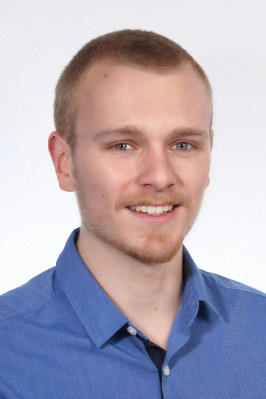
July 1993, Darmstadt, Germany
Q2:
PhD student
Q3:
Given the plethora of genetic diseases, from early on I was convinced, that understanding the genetic background of these malgnancies is key to succeed in the development of personalized medicines. In our days the amount of new technologies and the pace of groundbreaking developments unclose numerous possibilities for young and curious researchers.
Q4:
Chromosome 8p loss is one of the most frequent chromosomal alterations throughout human cancers affecting patient prognosis. Technically we combined a CRISPR/Cas9 guided chromosome editing approach mimicing 8pLOH in vitro with data of functional knockout screenings. This facilitates both, investigation of cancer development mechanisms and identification of novel vulnerabilities in 8p deleted tumors.
Thorben will speak about “Investigation of tumor suppressor gene loss on chromosome 8p in hepatocellular carcinoma using chromosome editing
” in the session C20 From mechanisms to therapeutic insights in cancer.
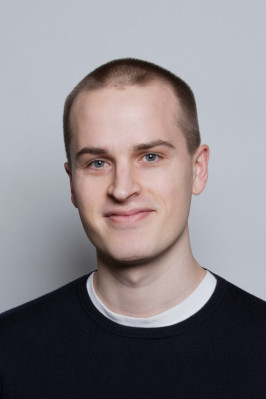
4.4.1989 Helsinki
Q2:
Postdoctoral researcher
Q3:
Being an MD-PhD by education and having done years of clinical work, I can clearly see the potential impact of genetics for improving medical care and public health. Also, being a Finn, the ongoing genetics work in Finland (e.g. FinnGen) naturally made genetics an interesting career option.
Q4:
Our work presents one of the first steps in bridging the research fields of human genetics and public health. As a novel approach, we provide an overview of the health impact of genetic exposures (e.g. common variants, polygenic scores) in terms of disability-adjusted life years.
Sakari will speak about “Public health impact of genetic variants
” in the session C17 Population genetics and genetic epidemiology.

03/04/1985, Vilnius
Q2:
Clinical research associate
Q3:
I am an ophthalmologists with an interest in neuro-ophthalmology and genetic eye disorders, specifically inherited optic neuropathies. Nowadays, availability of variety of genetic testing, from targeted gene testing to whole genome sequencing, enables to solve high number of genetic eye conditions. Genetics perfectly matches my interest in clinical science, research, bioinformatics and solving puzzles and mysteries in neuro-ophthalmology field. v
Q4:
Optic atrophy is a major manifestation of mitochondrial disease and, with pigmentary retinopathy is being increasingly recognised in patients with both mutations in mitochondrial DNA and nuclear-encoded mitochondrial proteins. Lately our study group identified novel gene-disease associations where optic atrophy was followed by retinal dystrophy. One of these findings will be presented expanding the phenotypic spectrum, possible pathogenesis mechanism of the disease which might lead to a discussion of possible treatment options.
Neringa will speak about “Beyond syndromic optic atrophy: expanding the ocular phenotype caused by biallelicvariants in FDXR and reporting retinal dystrophy as a novel featureBeyond syndromic optic atrophy: expanding the ocular phenotype caused by biallelicvariants in FDXR and reporting retinal dystrophy as a novel feature” in the session C15 Pleiotropic diseases: diagnosis and mechanisms.
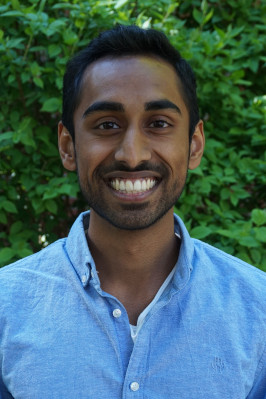
April 4, 1997, Olpe, Germany
Q2:
M.D. Student (5th year) at the Medical Faculty of the University of Bonn, Germany
Q3:
We study congenital central nervous system malformations (CNS), a disease that profoundly changes the lives of patients and families. Deciphering the function of genes in early development puts the spotlight on hidden processes that carry a potential to be future treatable targets.
But to be honest, the barbecue parties of my PI were also very persuasive.
Q4:
We propose disruption of TFAP2E to cause CNS and craniofacial anomalies. TFAP2E has not yet been studied in this phenotypic context. We describe de novo and novel variants in four patients with phenotypic overlap. Interestingly, our zebrafish functional studies phenocopied the human phenotype.
Jeshurun will speak about “Monoallelic variants in TFAP2E cause central nervous system and craniofacial anomalies” in the session C16 Monogenic neurodevelopmental disorders.
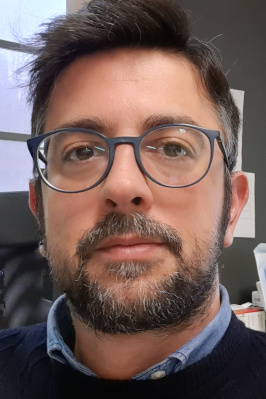
29/11/1979, Terlizzi (Bari), Italy.
Q2:
I’m a post-doctoral researcher.
Q3:
I graduated in Biology and I’ve always been fascinated by genetics and molecular biology. To be more precise, starting from my degree internship, going through my second level master, my PhD degree and up to now I’m working as a bioinformatician and focusing on cancer genetics and genomics. In the main, I think that bioinformatics, nowadays, is one of the most important means to study the genetic basis of human diseases.
Q4:
There is an ever-growing interest towards noncoding cis-regulatory variants as cancer drivers. Nevertheless, this interest is currently hampered by numerous challenges and limitations of variant prioritization and interpretation methods and tools. I will present the results that I obtained by implementing a little explored approach that could be useful to overcome these limitations.
Vito will speak about “Neuroblastoma somatic mutations enriched in cis-regulatory elements collectively affect genes involved in embryonic development and immune system response” in the session C20 From mechanisms to therapeutic insights in cancer.
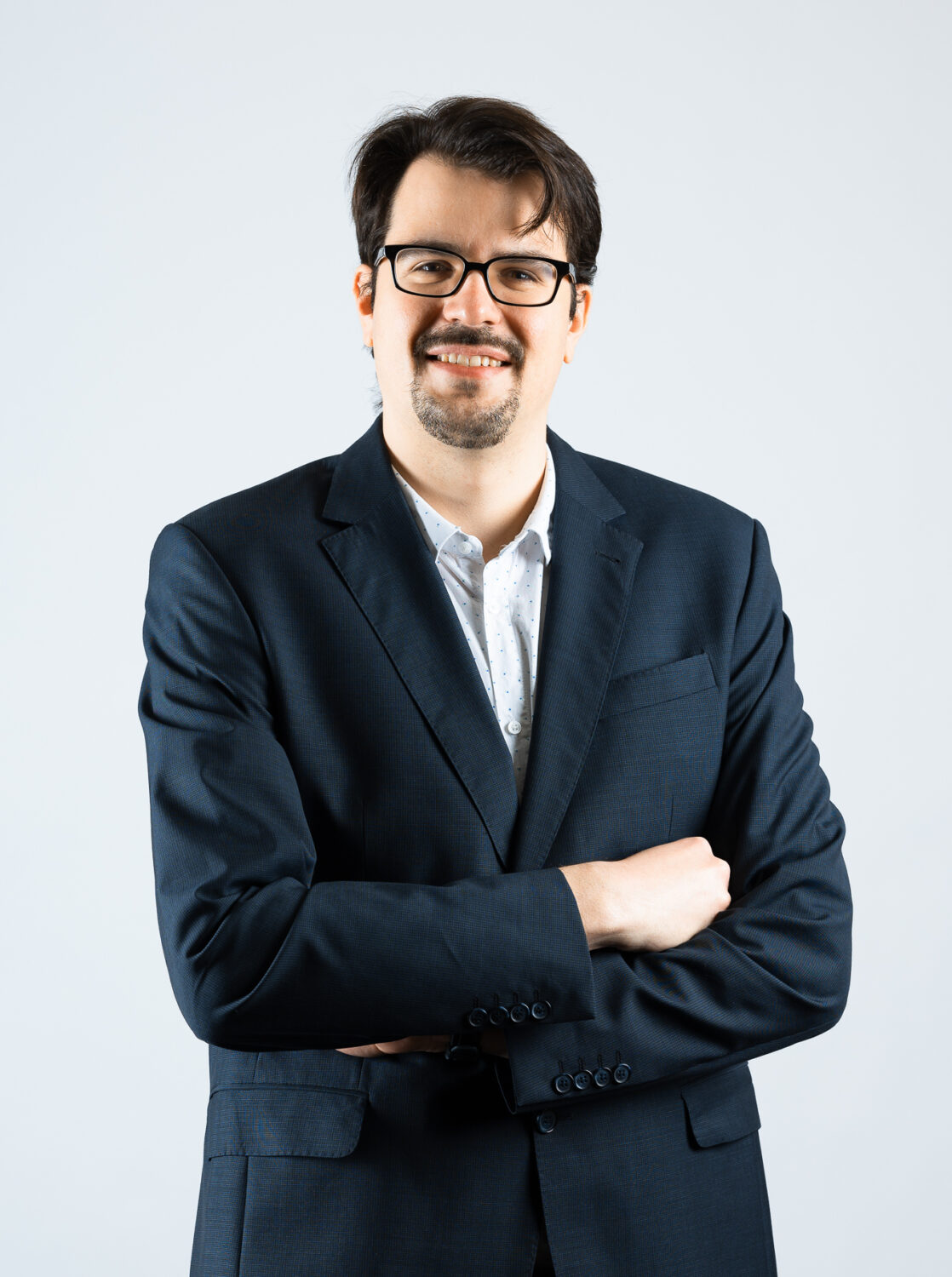
24.10.1989 in Schaffhausen, Switzerland
Q2:
PhD Student in the Department of Medical Genetics at University of Zurich
Q3:
I’ve always been fascinated by the astonishing interplay of genes during health and disease. Especially, the genetic heterogeneity of ciliopathies piqued my interested. Currently, I am trying to understand unique and shared molecular consequences of various ciliopathy genes using the zebrafish as a model.
Q4:
Bardet- Biedle syndrome is a severe Mendelian disorder with a strong retinal involvement. In the centre of its pathomechanism lies the BBSome, an octameric protein complex. However, its role in photoreceptor homeostasis remains poorly understood. Our research revealed an involvement in protein and lipid homeostasis that underlies early functional phenotypes.
Markus will speak about “The Bardet-Biedl protein Bbs1 control protein and lipid composition of zebrafish photoreceptor outer segments” in the session C15 Pleiotropic diseases: diagnosis and mechanisms.
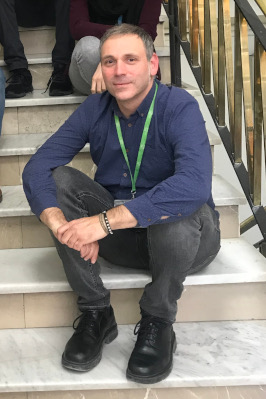
Born in Alcalá de Henares (Madrid, Spain) on the 4th of March of 1976
Q2:
I am researcher at the Health Research Institute Fundación Jiménez Díaz (Madrid, Spain). I lead the Bioinformatics group at the Genetics and Genomics Department and head the Bioinformatics Unit of the Institute. Since 2017 I am under the Miguel Servet program, a tenure track competitive program from ISCIII.
Q3:
I arrived to Genetics coming from Functional Genomics, Systems and Computational Biology. After PhD and postdoc, I aimed to bring my knowledge and skills to the study of genetic diseases, my main objective in the field is to contribute to the increase of the diagnosis rates of rare diseases developing specific tools where I find a gap (prioritization of variants, new candidate genes) and contributing to annotate variants from a Systems Biology perspective, as the work I present in this Conference.
Q4:
It is well known that protein post-translational modifications (PTMs) define functional residues. On the other hand, pathogenic variants also happen on important sites. Indeed PTMs is something to look at when characterizing causal variants at the molecular level, and some of their features (conservation or interface exposure) are considered in the pathogenicity predictions. Thus, while their importance is beyond any doubts, the role of PTM types as functional and defined entities has not been systematically studied. We hypothesize that if PTM types have defined functions, the specific removal of a PTM type can converge in concrete phenotypes. Here we propose more than two hundred cases where the lack of a PTM type due to DNA variants can be behind the molecular implications of certain genetic diseases, 40% of these associations being completely novel. On the top of this, we have implemented an algorithm for pathogenicity prediction of PTM sites in the context of specific pathologies that can lead to the discovery of novel variants associated.
Pablo will speak about “A global map of the impact of deletion of post-translational modification sites in genetic diseases” in the session C18 Functional genomics and transcriptomics.
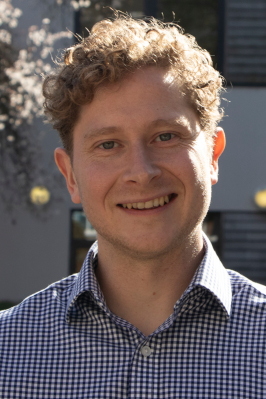
08-08-1986, Carmarthen, UK
Q2:
Senior Policy Analyst (Law, Regulation and Digital Health)
Q3:
As an academic lawyer by training, I came sideways into genomics, first working with clinicians and scientists in Oxford applying WGS into clinical practice. The many ways that genomic information challenges existing standards are fascinating to investigate and I love trying to find solutions to help translate genomic advances into practice.
Q4:
Many scientists and clinicians are currently facing data protection challenges to their proposed sharing and processing of genomic data. Our research seeks to respond to these by clarifying the law and identifying ways for the genomics community to develop appropriate standards for processing and sharing genomic data under the GDPR.
Colin will speak about “The impact of the GDPR on genomic medicine and research” in the session C19 ELSI in genomics.
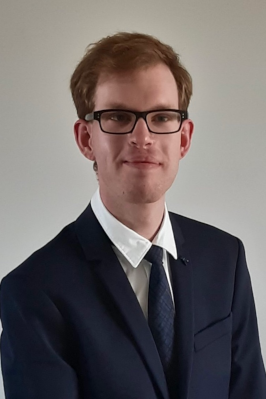
25 July 1995, Oudenaarde, Belgium
Q2:
PhD fellow at the Ghent Ectopic Mineralization Research Group, Center for Medical Genetics, Ghent University, Belgium
Internal Medicine resident, Ghent University Hospital, Belgium
Q3:
During my training as a medical doctor, I got intrigued by the distinct clinical phenotypes of rare Mendelian disorders and their underlying molecular pathophysiology. For my current PhD project on pseudoxanthoma elasticum (PXE), I combine wet lab research with medical consultations at our PXE clinic, keeping in touch with the patients whose cells and tissues I study in the lab. Being at this interface of basic science and translational clinical genetics fills me with joy and passion every day!
Q4:
In this study, we demonstrated for the first time the involvement of excessive DNA damage response and PARP1 signaling in the pathogenesis of pseudoxanthoma elasticum (PXE), a currently intractable multisystemic ectopic calcification disease, and found that minocycline attenuated this deleterious molecular mechanism and reduced ectopic calcification both in vitro and in vivo. To date, minocycline is already widely used in clinical practice e.g. for the treatment of acne, and can thus be quickly and easily repurposed for the treatment of both rare Mendelian disorders (e.g. PXE) as well as more prevalent and acquired ectopic calcification diseases such as arteriosclerosis or calcific aortic valve disease.
Lukas will speak about “Attenuation of dysfunctional DNA damage response and PARP1 signaling by minocycline reduces ectopic calcification in pseudoxanthoma elasticum” in the session C21 Clinical immunology and novel therapies of genetic diseases.

04/03/1994 Buenos Aires (Argentina)
Q2:
I am a PhD student at Telethon Institute of Genetics and Medicine
Q3:
I choose a career in genetics because it has an incredible potential not just in understanding complexes diseases, but in the recent years also in diagnosis and treatment.
Q4:
The swine model I’m presenting can provide new insights for understanding Stargardt disease phenotype development in patients, as the high density of cone photoreceptors in the streak-like region of the pig retina resembles the human macula. In addition, the therapeutic approach we have tested in the swine STGD1 model appears promising in reconstituting large proteins in photoreceptors.
Eugenio will speak about “Gene therapy in a novel large animal model of Stargardt disease” in the session C21 Clinical immunology and novel therapies of genetic diseases.
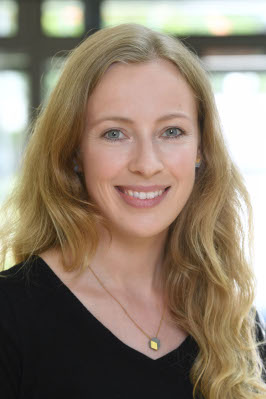
22.06.1988 in Schwerin, Germany
Q2:
Postdoctoral researcher in the Population Genomics and Genetics of Complex Traits Lab, Department of Genetic Medicine and Development, University of Geneva
Q3:
Population genetics is one of these fascinating fields where mathematics meets biology. Pursuing a career in genetics means to me, that I can channel my passion for mathematics into tackling meaningful cutting-edge problems, and have an actual impact on the advances in medical genomics.
Q4:
We know that the human genome can be partitioned into local regulatory domains, but there are still many open questions regarding gene cis-regulation. With our project, we aim to get a better understanding of the regulatory mechanisms orchestrating co-expression of proximal genes. Specifically, our longitudinal twin data set allows us to investigate the temporal dynamics of local gene co-expression and their underlying genetic bases, while assessing both the genetic and environmental influences.
Anna will speak about “Dynamics of gene regulatory organization in longitudinal twin RNA-seq data” in the session C18 Functional genomics and transcriptomics.
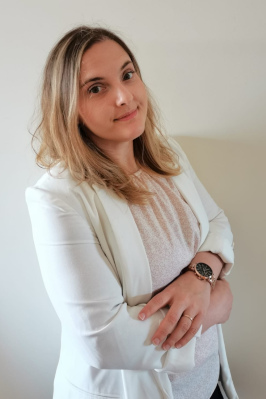
February 16, 1989; Alcochete, Portugal
Q2:
Contracted Researcher
Q3:
When I was 10 years-old my mother gave me my first genetics book. That book had a major impact in my life because I didn’t understand anything that was written there. That was the moment I knew I would pursue a career in science trying to understand the concepts behind human genetics.
Q4:
Our work proposes an alternative and unexplored mechanism for the increase and selection of advantageous mutations in tumors. Overexpressing a Serine tRNA was enough to increase the number of variants observed regardless of treatment and these variants seem to favor proliferation and therapy resistance . The fact that tRNA deregulation can have such a profound effect in the genome of human tumors gives a new perspective into an old problem – the origin of tumor mutations.
Mafalda will speak about “tRNASer overexpression induces adaptive mutations in NSCLC tumors” in the session C20 From mechanisms to therapeutic insights in cancer.
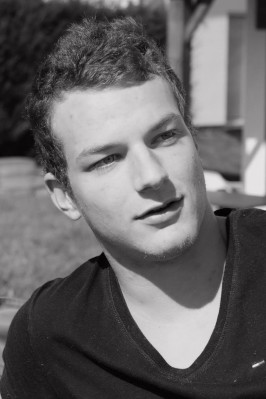
The 4th of October 1995 Ghent (Belgium)
Q2:
I am a third-year PhD student at the lab guided by Professor Kris Vleminckx in the Department of Molecular Biomedical Research (DMBR) at Ghent University in Belgium.
Q3:
During my biotechnology education I started to realize that genetic knowledge is one of the most important factors in unraveling cancer and diseases in general. I developed a strong need of wanting to contribute to the genetics community in some way. This urge was eventuality granted in the opportunity to start my PhD program in a lab with extensive knowledge in developing genetic disease models in Xenopus tropicalis.
Q4:
This unique research project is a joint effort from different PhD students during the past four years. We present an easy-to-use genetic desmoid tumor model generated in X. tropicalis using CRISPR/Cas9, that served for the recent discovery of the anti-tumor effects of a novel repurposed compound, Tazemetostat. Strikingly, the compound-induced in vivo anti-tumor effects observed in the aquatic frog model are now also validated in cell lines derived from desmoid patients. We strongly believe that these observations open the door for future clinical research and are of interest to the audience of the ESGH conference.
Dieter will speak about “Identifying and characterizing EZH2 as a druggable dependency factor for desmoid tumors in a genetic Xenopus tropicalis model for Gardner’s Syndrome” in the session C20 From mechanisms to therapeutic insights in cancer.
These authors will present on Tuesday, August 31, 2021
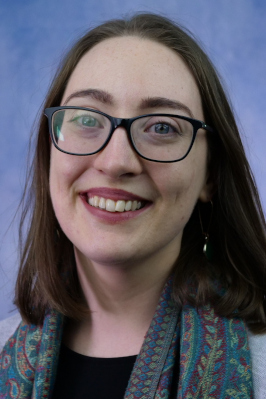
15th June 1990 Drogheda, Ireland
Q2:
Lecturer in Computational Biology
Q3:
I attended a talk about genetics, human health and personalised medicine which inspired me to study genetics as an undergraduate. Completing this degree led to a career in genetics research so that I could apply my skills to a range of diseases and bridge the gap between science and medicine.
Q4:
Polycystic kidney disease severity ranges from in-utero onset to preserved kidney function into old age. We have quantified for the first time the contribution of rare variant burden to this phenotypic variability. This research has important implications for patient counseling and the assessment of variant pathogenicity in clinical genetics services
Maria will speak about “Rare variant burden influences the rate of disease progression in Polycystic Kidney Disease” in the session C23 Internal organs – Kidney, bowel, fat.
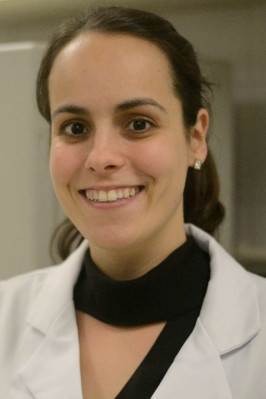
January 18th, 1991, Santa Barbara d’Oeste, Brazil
Q2:
PhD student (H2020 Marie Skłodowska-Curie Actions ITN No 766347) v
Q3:
Since at a young age I wanted to be a scientist. At university I discovered genetics, since then we never been apart. For me genetics it is like a puzzle, with a tremendous amount of possibilities and many new things to be discovered, that is what captivates me.
Q4:
This is the first time that WNT11 is associated to a disease. We are trying to explain how are the interactions of this gene and how it might control the Wnt pathways, our aim is to find targets that in the future could be used for the development of drugs to treat osteoporosis.
Caroline will speak about “WNT11 is associated to idiopathic osteoporosis by inhibiting the Wnt canonical and non-canonical pathways” in the session C22 Developmental disorders & syndromes II.
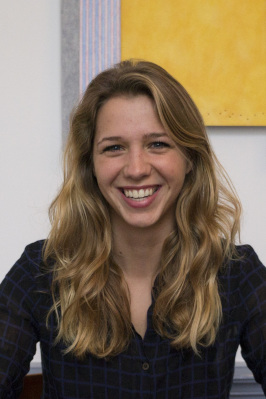
November 1st, 1992, Dordrecht
Q2:
PhD-student and MD
Q3:
Working as a medical doctor in the genetics department I realised the difference a genetic diagnosis can make in a patient’s life. This made me want to pursue a career in genetics and motivated me to do a PhD in nephrogenetics to really understand how these diagnosis are discovered and to add to the knowledge that can help these patients.
Q4:
What I find most interesting and exciting about the research I’m presenting is that this project started out as an unsolved case from our genetics department. Working from bedside to bench and back again we were able to identify a new candidate gene for nephronophthisis.
John will speak about “Biallelic TMEM72 variants in patients with nephronophthisis-like phenotype” in the session C23 Internal organs – Kidney, bowel, fat.
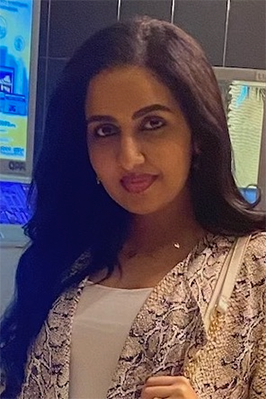
31/3/1990 KSA
Q2:
I just finished my PhD in Genomics and Precision Medicine from Hamad Bin Khalifa University, Qatar.
Q3:
As a physician working in an Arabic country, I have been interested in genetic diseases to help patients and apply the concept of precision medicine to deliver a tailored diagnosis and treatment according to each patient’s needs.
Q4:
While the prevalence and epidemiology of medically actionable variants are available from large population studies, there is a lack of data on genetic variants prevalent in the Arab and Middle Eastern population, where consanguineous marriages are common. The combination of genome and health data from Qatar Genome Program, confer the possibility of understanding the diverse phenotypic consequences and the penetration of genetic variations in disease-causing genes. our study is the largest and most comprehensive analysis to estimate medically actionable variants in the Arab population of the Middle East.
Amal will speak about “Analysis of medically actionable variants in the 59 ACMG genes using 6045 whole genomes from the Qatar Genome Program
” in the session C25Using genomics to personalise medicine.
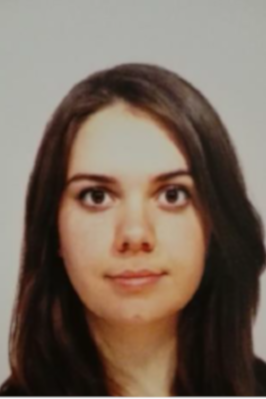
30/10/1993, Siracusa (Italy)
Q2:
PhD student
Q3:
During my master in Medical Biotechnology in Milan, I was selected as a double degree student in a joint program between University of Milan and University of Paris. This program was focused on genetics and allowed me to discover this fascinating world and to perform an internship at the Imagine Institute (Paris) on rare genetic skeletal dysplasia. Since I was really interested by this topic I decided to pursue my career doing a PhD in the same laboratory.
Q4:
In our research we described the involvement of a new gene in proteoglycan biosynthesis and in chondrodysplasia with multiple dislocations, a group of rare disorders characterized by severe growth retardation. Furthermore, we are characterizing the impact of the proteoglycan biosynthesis defect on skeletal development using a mouse model deficient for this gene. The characterization of this specific defect will improve the understanding of the PG role on all the steps of skeletal development.
Alessandra will speak about “Impact of glycosaminoglycan biosynthesis defects on the endochondral ossification in a Slc10a7-/- mouse model with skeletal dysplasia” in the session C22 Developmental disorders & syndromes II.
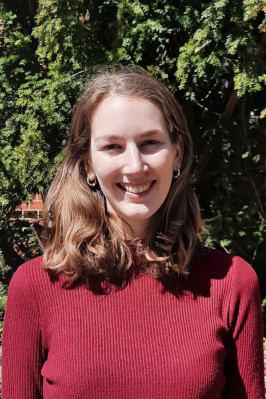
11th April 1994, Bergisch Gladbach, Germany
Q2:
I am a PhD student in the lab of Prof. Kerstin Kutsche at the Institute of Human Genetics, University Medical Center Hamburg-Eppendorf, Germany
Q3:
Working in human genetics, especially in the field of rare diseases, is probably the best way to understand what four letters are capable of.
Q4:
The identification of the genetic cause of a rare disease is always exciting, but our work does not end with this. We investigated the underlying pathomechanism in patient-derived cells aiming to tell the whole story.
Tess will speak about “A homozygous hypomorphic BNIP1 variant results in disproportionate short stature and skeletal dysplasia and causes an increase in autophagosomes and reduced autophagic flux” in the session C22 Developmental disorders & syndromes II.
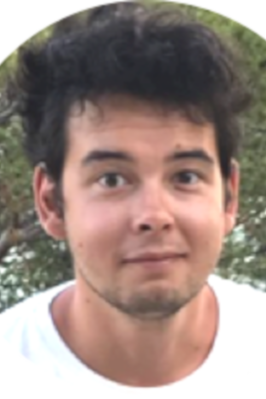
March 12th 1992 Moscow, Russia
Q2:
I am currently employed as a Data Scientist in Rennes University Hospital (France) working on novel bioinformatics strategies of pathogenic variant interpretation in rare disorders.
In October 2021, I will start a post-doctoral position at USC Center for Genetic Epidemiology (Los Angeles) to study genetic factors of cancer predisposition among different ethnicities.
Q3:
I discovered genetics in high school when I migrated to France. Since the beginning, genetics has been intuitive for me, which is why I chose to join the effort of improving clinical research and diagnosis in genetic disorders. Additionally, by teaching classes during my Ph.D., I developed a passion for depicting complex genetic concepts in simple, understandable terms.
Q4:
In clinical genetics, many patients undergo a long-term unsuccessful search for a causative factor, known as the ‘diagnostic odyssey’. Such enigmatic cases underline the necessity to investigate unconventional genetic mechanisms of disease pathogenesis, currently discarded by traditional diagnostic procedures. Such genetic mechanisms include the pathogenic impact of synonymous variants, currently gaining increasing interest, which the subject of my presentation.
Artem will speak about “How silence shapes the brain: synonymous variants alter codon usage and translation of Sonic Hedgehog in holoprosencephaly” in the session C24 Genome variation and architecture.

04-08-1990, Amsterdam, The Netherlands
Q2:
Postdoc
Q3:
During my MSc studies I was interested in developmental biology and in particular brain development. After my masters I continued a PhD in Clinical genetics focusing on brain disorders and using the zebrafish as a model organism to study developmental processes with a focus on the brain’s macrophages called microglia. Here, I became interested in the genetics underlying human developmental diseases, therefore I continued as a postdoc to study how genetic changes affect neuronal developmental in the intestine, with a focus on the congenital disorder Hirschsprung disease.
Q4:
We determined the single cell transcriptome of the developing enteric nervous system in zebrafish using controls and a genetic Hirschsprung disease model. Our results point toward very exciting data suggesting that a particular progenitor population seems to remain unaffected in the Hirschsprung model. If present in Hirschsprung patients, these cells could have great implications in possible therapeutic strategies targeting endogenous cells in patients.
Laura will speak about “Single cell RNA sequencing of the enteric nervous system shows selective preservation of schwann cell progenitor-like cells inretmutant zebrafish” in the session C23 Internal organs – Kidney, bowel, fat.
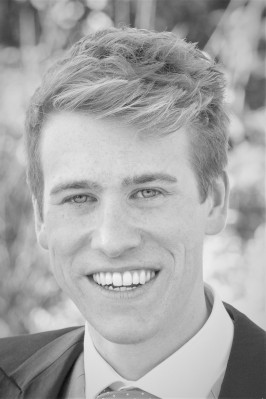
Preston, United Kingdom [11-02-1991] Q2:
NIHR Academic Clinical Fellow in Genomic Medicine and Clinical Genetics Speciality Registrar
Q3:
Our understanding of the human genome continues to advance exponentially and my career begins at a point in time where we begin to develop approaches to tangibly action these advancements. Gene editing, rapid diagnostics and population-level genome projects all offer methods to predict and prevent disease. This creates a new healthcare paradigm with stimulating technical and ethical challenges, which I am excited to work towards solving.
Q4:
Traditional genetic testing approaches have historically precluded the use of genomic data in the acute setting, due to the length of time testing can take. Here, we present results from the PALOH trial which demonstrate it is possible to genotype a variant of interest in approximately 25 minutes from a buccal swab. Approximately 1 in 500 individuals possess the m.1555A>G variant which, if exposed to aminoglycoside antibiotics, results in profound sensorineural deafness. This work demonstrates that rapid genotyping is possible and can be used in acute medical settings to improve patient outcomes, without disrupting normal practice. This work opens up opportunities for other initiatives which look to apply genomics in non-traditional healthcare settings.
John will speak about “Pharmacogenetics to Avoid Loss of Hearing (PALOH): A Prospective Observational Trial to Assess the Implementation of Rapid Genotyping to Avoid Aminoglycoside Induced Ototoxicity in” in the session C25 Using genomics to personalise medicine.
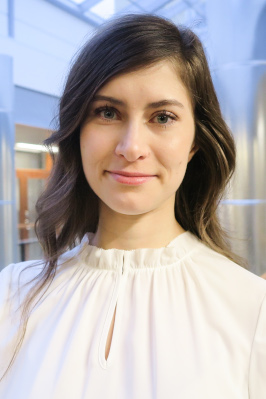
Postdoctoral researcher at the Institute for Molecular Medicine Finland (FIMM)
Q3:
As a medical doctor and a statistician, genomics felt like an especially compelling field for me, particularly with the active ongoing research on integration of genomics into routine clinical practice. I have found it rewarding to use my experience in patient care to design and implement genomics studies which could translate into solutions for everyday clinical challenges.
Q4:
When discussing about clinical utility of polygenic risk scores, one of the most frequent counterarguments is that why do we need to calculate polygenic risk scores when we can simply as about family history of disease? Our study now demonstrates that across a diverse set of diseases, family history and polygenic risk are actually largely independent risk factors, and provide complementary information in risk stratification and risk prediction. This supports the clinical utility of polygenic risk scores for a more comprehensive assessment of inherited risk.
Nina will speak about “Family history and polygenic risk scores are not interchangeable measures of genetic susceptibility” in the session C25 Using genomics to personalise medicine.
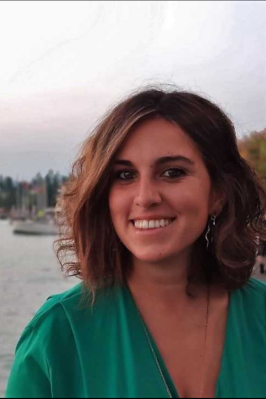
15th February 1993. Acqui Terme
Q2:
PhD student
Q3:
Genetics lights up academic community since ever. Genetics is a crucial key to open new perspectives in pathogenesis understanding and new chances in diseases treatment. Genetics helps in managing and developing new tools and devices for clinical and research use.
I consider of the utmost interest to investigate complex diseases applying both statistical and epidemiological genetics and taking advantage of omics data to elucidate complex conditions.
Q4:
Hirschsprung disease is a congenital disease, and its unique therapy is surgery. But, despite successful surgery, one baby out of three risk to develop enterocolitis, very serious and possibly fatal complications. We present for the first time a genetic variant associated to HAEC. This HAEC susceptibility variant is in a gene that could be a drug target to reduce inflammation and treat this life-threatening condition, thus saving babies’ lives.
Francesca will speak about “The OSMR gene is involved in Hirschsprung Associated Enterocolitis susceptibility through an altered downstream signaling
” in the session C23 Internal organs – Kidney, bowel, fat.
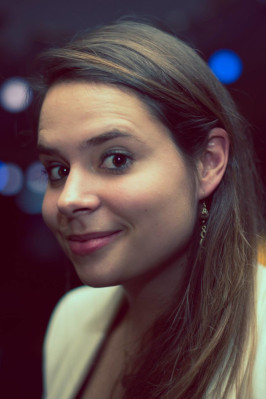
14/07/1990, Ghent
Q2:
Currently, I’m combining a PhD on rare neurodegenerative diseases in the Dermaut Lab with a specialization in clinical genetics at Ghent University.
Q3:
I find this rapidly changing field very interesting. Due to technical advances (NGS), novel disease genes are identified every day and new insights into the etiopathogenesis of diseases are generated, paving the way for innovative therapeutic strategies. Molecular diagnoses are the first step towards precision medicine which can be applied for rare diseases but also for more common pathologies. Additionally, I’m intrigued by the ethical issues associated with large scale genetic testing in the population since an adequate legal framework is lagging behind.
Q4:
First, we report on a novel type of autosomal recessive lipodystrophy. We hypothesize that a substantial part of the molecularly unexplained lipodystrophies is a consequence of PLAAT3 deficiency. Next, we were able to unravel the cellular mechanisms by which PLAAT3 deficiency leads to adipocyte dysfunction, increasing our understanding on the crucial role of white adipose tissue in metabolic health and energy homeostasis. Finally, our understanding of the underlying altered cellular pathways enabled us to treat these patients more appropriately.
Nika will speak about “Lipodystrophy due to genetic deficiency of picornavirus host factor and obesity regulator PLAAT3” in the session C23 Internal organs – Kidney, bowel, fat.
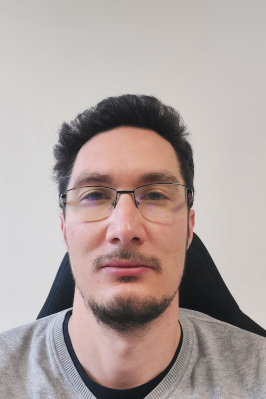
1984-12-02, Montpellier, France
Q2:
M.D., Ph.D.
Laboratory in Genomic Diagnostic of Rare Disease
Translationnal Research group leader
Principal Investigator of GS-trio and RNA-Seq combination for Intellectual Disability resolution (ClinicalTrials: NCT03857997)
Laboratory manager for fast prenatal exome and fast postnatal genome
Q3:
After starting scientific studies, I switched to Medical school, to finally choose genetich so that my work may benefit to patients. It was an homecoming that I never regreted.
I like the mix of clinic and lab , but I love the inquiry when analyzing a vcf file from omics data. It’s a continuous discovery/challenge in a fast-changing field. But when you receive a mail from the parents that are gratefull for the diagnosis deadlock resolution, it makes your day.
Q4:
Regarding the MYCN gain-of-function variants, this is interesting because there is not so many mirror-disorders described both at the molecular and phenotypic level. This is also interesting because it’s a description of a specific mechanism associated to a novel human phenotype, in a well known gene responsible for another human disorder. We are seeing descriptions of novel gene-disease association due to the evergrowing data-sahring in ultra-rare disorders, but describing novel phenotypes in already known genes is more challenging because the variant or the phenotype is not what is expected.
Frédéric will speak about “Pathogenic MYCN gain-of-function variants are responsible for a mirror phenotype of the Feingold syndrome, resulting in a novel megalencephaly-polydactyly-hydrocephalus syndrome” in the session C22 Developmental disorders & syndromes II.
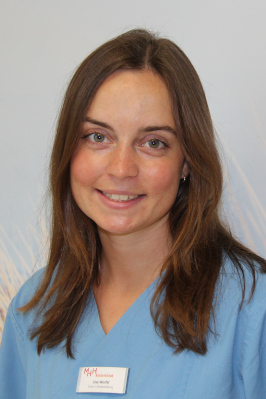
09.04.1992, Hannover
Q2:
I am MD and a resident in pediatrics. I am currently participating in a clinician scientist program that enables me to perform research in the genetics of kidney diseases in addition to my clinical training.
Q3:
A genetic background is discussed for many severe and chronic pediatric diseases. Currently there is still a high number of pediatric diseases including kidney diseases with an unknown origin. A diagnosis based on genetic findings might lead to a better differentiation of diagnosis and better treatment of children with chronic diseases. In general, I find it important to combine the specialties of clinical nephrology and genetics.
Q4:
The impact of genetics is probably highly underestimated in clinical pediatric nephrology. For patients with congenital renal malformations the genetic background often remains unexplained. The perspective of contributing knew knowledge for a better diagnosis and hopefully also for more efficiant personalised therapies is highly motivating working in this field.
Nina will speak about “Diagnostic yield and benefits of whole-exome sequencing in patients with congenital anomalies of the kidney and urinary tract (CAKUT) diagnosed in the first thousand days of life” in the session C23 Internal organs – Kidney, bowel, fat.
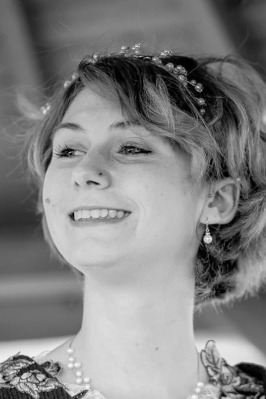
2nd June 1995, born in Reading, United Kingdom
Q2:
Postdoctoral researcher
Q3:
I have always been fascinated by embryonic development, and how the order of “letters” in our DNA guides the genesis of something so complex as a human. I chose a career in genetics to better understand this process. Ultimately, I aim to use the scientific insights from my research to decipher how defects in genes cause defects in human development, with the long-term aim of developing better treatments and/or counselling options for genetic disorders.
Q4:
We have recently identified two new patients with the rare craniofacial disorder Burn-McKeown syndrome and novel genotypes in the gene TXNL4A from whole-genome sequencing data. These patients’ diagnoses had originally been missed because standard bioinformatics pipelines frequently do not consider the non-coding genome. Thus, we show the importance of considering non-coding variants in whole-genome sequencing variant analysis. We have also used a dual luciferase assay to systematically unpick a region of the TXNL4A promoter which is subject to deletion in our patients, to identify the key nucleotides in transcription factor binding and gene expression. This work has allowed us to identify potential alternative disease-causing genotypes in TXNL4A and provides a paradigm for investigating promoter variants in vitro.
Katherine will speak about “Expanding the genotypic spectrum of TXNL4A variants in Burn-McKeown syndrome” in the session C22 Developmental disorders & syndromes II.
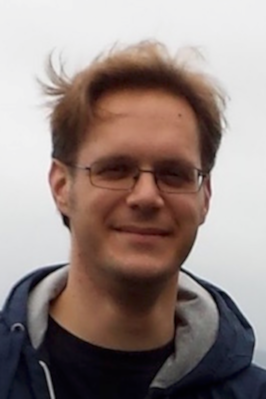
May 24th 1986, Drachten, The Netherlands
Q2:
Postdoc Bioinformatics at Genomics Coordination Center, dept. of Genetics, University Medical Center Groningen
Q3:
Working at the genetics department of a university hospital lets me contribute to finding a molecular diagnosis for our patients. As part of a multidisciplinary team, I enjoy solving all kinds of complex puzzles at the intersection between biology and informatics. In addition, our research results often benefit clinical practice, which is quite satisfying.
Q4:
Scattered across many places, a wealth of genomic data remains unused for research and diagnostics, limiting our knowledge and our ability to help patients. We must realize that the real challenge is not just to gather more data, but to share what we have. FAIR Genomes is a unique and growing (inter)national collaboration working to overcome the social, technical, legal and practical hurdles that stand in the way of effectively finding and sharing genome data.
Joeri will speak about “FAIR Genomes: a metadata model and guidelines for reuse of NGS data” in the session C25 Using genomics to personalise medicine.


